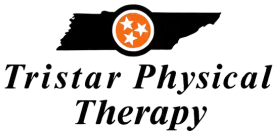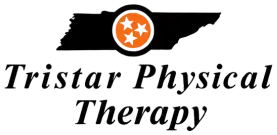Table of Contents
- What is Vestibular Rehabilitation?
- Common Types of Balance Disorders
- Benign Paroxysmal Positional Vertigo (BPPV)
- Meniere’s Disease
- Vestibular Neuritis and Labyrinthitis
- Concussion
- Benefits of Vestibular Rehabilitation
- Reduced Dizziness and Vertigo
- Improved Balance and Coordination
- Enhanced Quality of Life
- Vestibular Rehabilitation Exercises
- Gaze Stabilization Exercise
- Balance Retraining Exercise
- Brandt-Daroff Exercise
- Canalith Repositioning Maneuver
- Incorporating Vestibular Rehabilitation into Treatment Plans
- Conclusion
Vestibular Rehabilitation: A Comprehensive Guide for Treating Balance Disorders
Balance is a crucial aspect of our daily activities, allowing us to perform various actions with ease. However, balance disorders can diminish one’s ability to carry out these activities, causing difficulties with mobility and leading to falls. Vestibular rehabilitation is an effective treatment for balance disorders that addresses the root cause of balance issues. In this comprehensive guide, we will explore vestibular rehabilitation, its benefits, exercises, and how it can be incorporated into treatment plans.
What is Vestibular Rehabilitation?
Vestibular rehabilitation is a specific type of physical therapy designed to treat balance disorders that arise from issues related to the inner ear, also known as the vestibular system. The vestibular system is responsible for regulating balance and spatial orientation in the body. When this system is damaged, it can cause conditions like vertigo, dizziness, and other balance-related disorders.
Vestibular rehabilitation employs a series of exercises and techniques to promote the body’s adaptation and compensation for inner ear damage. These exercises aim to improve balance and reduce symptoms. The goal of vestibular rehabilitation is to help patients overcome dizziness and balance issues that affect their quality of life and mobility.
Common Types of Balance Disorders
Balance disorders can arise from a myriad of issues. Some of the common types of balance disorders that vestibular rehabilitation can treat include:
Benign Paroxysmal Positional Vertigo (BPPV)
BPPV is a common vestibular disorder that involves sudden bouts of dizziness and vertigo, often triggered by specific head movements. BPPV is caused by small calcium crystals in the inner ear, which can dislodge and cause balance issues.
Meniere’s Disease
Meniere’s disease is a chronic disorder that affects the inner ear and causes dizziness, vertigo, and balance issues. Symptoms tend to occur in episodes that can last several hours. Meniere’s disease can also cause hearing loss and tinnitus.
Vestibular Neuritis and Labyrinthitis
Vestibular neuritis and labyrinthitis are conditions that cause inflammation in the inner ear, leading to balance issues, dizziness, and vertigo. Vestibular neuritis affects the nerves that regulate balance, while labyrinthitis can also cause hearing loss.
Concussion
Concussions can cause temporary or long-term balance issues, often affecting athletes and those involved in high-impact sports. Vestibular rehabilitation can help patients recover from balance issues associated with concussions.
Benefits of Vestibular Rehabilitation
Vestibular rehabilitation can offer a range of benefits to patients suffering from balance disorders. Some of the key benefits include:
Reduced Dizziness and Vertigo
Vestibular exercises can help patients overcome dizziness and vertigo, reducing symptoms associated with balance disorders. These exercises are designed to promote adaptation and compensation in the vestibular system, reducing the severity of vertigo and dizziness.
Improved Balance and Coordination
Vestibular rehabilitation exercises improve balance and coordination in patients, reducing the risk of falls and improving mobility. By promoting adaptation and compensation in the vestibular system, these exercises help patients regain their balance and reduce the risk of injuries related to balance disorders.
Enhanced Quality of Life
Balance issues can diminish one’s quality of life, affecting their ability to carry out daily activities. Vestibular rehabilitation can help patients overcome dizziness, vertigo, and other balance-related issues, improving their quality of life and overall well-being.
Vestibular Rehabilitation Exercises
Vestibular rehabilitation exercises are designed to promote adaptation and compensation in the vestibular system. These exercises can be tailored to individual patient needs, depending on the underlying cause of the balance disorder. Here are some of the common vestibular rehabilitation exercises:
Gaze Stabilization Exercise
The gaze stabilization exercise is designed to improve the vestibulo-ocular reflex, which helps stabilize vision during head movements. The exercise involves maintaining visual focus on a stationary object while the head moves in different directions.
Balance Retraining Exercise
The balance retraining exercise involves training patients to maintain their balance while performing tasks that challenge their balance. The exercise can involve standing on one foot, walking on uneven surfaces, or performing other activities that require balance.
Brandt-Daroff Exercise
The Brandt-Daroff exercise is a series of movements designed to treat BPPV. The exercise involves sitting on the edge of a bed with the head tilted at a 45-degree angle and then lying down on one side. After a short period, the patient sits up and lies down on the other side, repeating the process.
Canalith Repositioning Maneuver
The canalith repositioning maneuver is used to treat BPPV by moving dislodged calcium crystals into a different part of the inner ear. The maneuver involves a series of head and body movements that promote the movement of the calcium crystals.
Incorporating Vestibular Rehabilitation into Treatment Plans
Vestibular rehabilitation can be incorporated into treatment plans for patients suffering from balance disorders. Patients can work with their healthcare providers to develop tailored exercise plans that address their individual needs. Additionally, healthcare providers can work with physiotherapists and rehabilitation specialists to develop comprehensive treatment plans that include vestibular exercises.
Conclusion
Vestibular rehabilitation is an effective treatment for balance disorders, offering a range of benefits to patients suffering from vertigo, dizziness, and other balance-related issues. By promoting adaptation and compensation in the vestibular system, vestibular rehabilitation exercises can improve balance and coordination, reducing the risk of falls and improving patient mobility. With a range of exercises and techniques available, vestibular rehabilitation can be tailored to individual patient needs and incorporated into comprehensive treatment plans.

